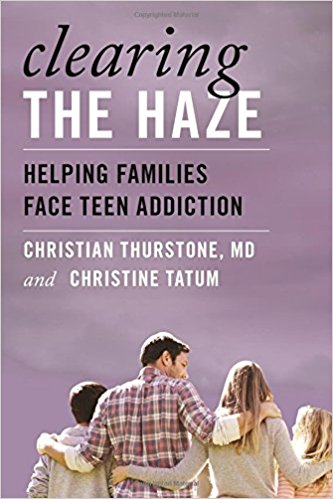These research outcomes were published in the Journal of the American Academy of Child & Adolescent Psychiatry in May 2014.
Title: Conduct Disorder and Initiation of Substance Use: A Prospective Longitudinal Study
Authors: Dr. Christian Hopfer, M.D., Dr. Stacy Salomonsen-Sautel, Ph.D., Dr. Susan Mikulich-Gilbertson, Ph.D., Dr. Sung-Joon Min, Ph.D., Dr. Matt McQueen, Ph.D., Dr. Thomas Crowley, M.D., Dr. Susan Young, Ph.D., Dr. Robin Corley, Ph.D., Dr. Joseph Sakai, M.D., Dr. Christian Thurstone, M.D., Dr. Analice Hoffenberg, M.D., M.S.P.H., Dr. Christie Hartman, Ph.D., and Dr. John Hewitt, Ph.D.
Citation: J Am Acad Child Adolesc Psychiatry. 2013 May; 52(5): 10.1016/j.jaac.2013.02.014
Abstract
Overview
Initiation of substance use is the first step along a multi-step pathway that may eventually lead to the development of substance use disorders (SUD). Early age of initiation of substance use has been associated with a greater risk of eventually developing a SUD for alcohol, tobacco, and illicit substances. The association between early age of onset of substance initiation and the later development of SUD has important theoretical as well as public health implications. There has been substantial debate over whether early age of substance initiation is a causal risk factor for developing later SUD or whether it acts as a marker for correlated factors that confer the risk for developing SUD3. Some researchers, primarily studying the influence of alcohol use on adolescents have posited that early alcohol use alters adolescent brain development and developmental trajectories. An alternative hypothesis has emphasized that early age of substance initiation is a noncausal risk factor for the later development of SUD that acts as a marker for a range of correlated adolescent problem behaviors which themselves confer the risk for later SUD. These researchers have focused on the observation that adolescent antisocial behaviors, novelty seeking, early initiation of substance use are highly correlated and have emphasized that early substance use is a marker for correlated externalizing behaviors which confer risk for the development of SUD.
From a public health perspective, if early age of initiation is a causal risk factor for later development of SUD, an implication would be that delaying the onset of substance use could result in a reduction in the number of persons who eventually develop a SUD. If the alternative hypothesis is correct, i.e., that age of initiation is a noncausal risk factor, this would imply that prevention programs may need to more broadly target a range of problematic adolescent behaviors, including antisocial behaviors, to reduce the development of SUD.
One class of problem behaviors consistently associated with early onset of substance use is conduct disorder (CD). CD is a syndrome characterized by aggressive behaviors, truancy, violating social norms, and lying (APA).
Epidemiological studies have shown that youth with CD initiate substances early, have elevated rates of substance use, and elevated rates of SUD. National surveys of adult populations have consistently demonstrated that persons with adult antisocial personality disorder, which requires adolescent CD as a precursor, have high rates of SUD as well as more severe SUD. Most prospective studies examining the association between CD and substance use have focused on the initiation of commonly used substances, such as alcohol, tobacco, or marijuana. Population-based epidemiologic surveys of adolescents have demonstrated that by 12th grade, 71%, 42%, 43%, and 25% have tried alcohol, cigarettes, marijuana, or another illicit substances during their lifetime.
Although CD has been associated with an earlier rate of initiation of substances, to our knowledge, whether the effect of CD on initiation varies by substance class has not been examined. In particular, since CD is associated with a pattern of violating social norms, we hypothesized that youth with CD may be comparatively at greater risk for initiating substances that are illicit. Alcohol and tobacco, although illicit substances for underage youth, are frequently used by adolescents and are legal to use once persons become 21 and 18, respectively. Marijuana, though once considered illicit for all ages, is also commonly used; in 18 states marijuana is now available through a medical recommendation and was recently legalized in two states for adult recreational consumption. Other illicit substances are experimented with by proportionally fewer adolescents.
The goals of this study were to:
-
1) examine the influence of CD on substance initiation, across substance classes;
2) to explore whether CD is associated with an earlier age of initiation across all substances; and
3) to examine whether CD conferred relatively greater hazards of initiating substances.
We hypothesized that youth with CD are more likely to have ever used a substance, have a younger age of substance experimentation, and have greater hazards for substance initiation at earlier ages compared with youth without CD, and that these hazard ratios would be comparatively greater for illicit as compared to licit substances.
Results
Among community subjects, CD was associated with elevated adjusted hazards for initiation of all substances, with comparatively greater hazard ratios of initiating illicit substances at age 15. By age 18, the adjusted hazard ratios remained significant except for alcohol. At age 21, the adjusted hazard ratios were significant only for cocaine, amphetamines, inhalants and club drugs. A substantial portion of community subjects without CD never initiated illicit substances. Clinical youth with CD demonstrated similar patterns, with comparatively larger adjusted hazard ratios.
Conclusions
CD confers increased risk for substance initiation across all substance classes at age 15 with greater relative risk for illicit substances compared to licit substances. This effect continues until age 18, with the weakest effect for alcohol. It further diminishes for other substances by 21; although, the likelihood of initiating cocaine, amphetamines, inhalants and club drugs among those who have not initiated yet continues to be highly elevated by 21.


We welcome all thoughtful comments, but please abide by our commenting rules